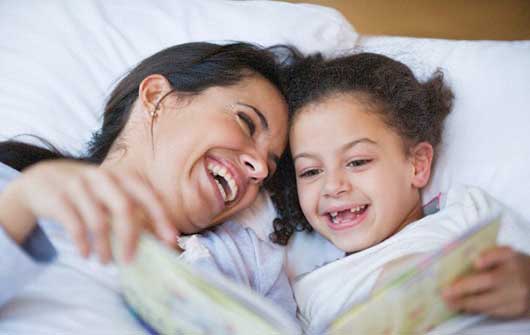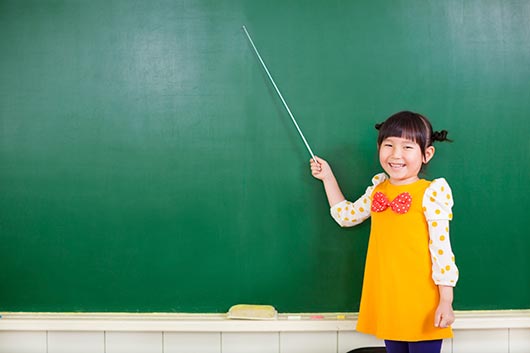
[Mamiverse’s Bilingual Plus is an online channel devoted to bringing parents and educators the bilingual learning tools they need in the form of digital picture books, sing-alongs, and free curriculum-based family activities.]
One summer afternoon, as we were getting ready to leave the local public pool, my 5-year old son dropped his towel on the muddy floor.
“¡Poné la toalla en el banco! (Put the towel on the bench!),” I shouted across the crowds flooding the locker room. “What?” he asked. I repeated this twice, raising my voice each time.
“Bank?” he asked, looking puzzled. That’s when I lost it. I’m not proud. I’m human.
“What is that you don’t understand?” I snapped, in my Argentine-accented English. “Put the towel on the bench.” He gave me an angry look. “I don’t understand Spanish that well,” he said in a matter-of-fact tone that swiftly reflected who was the mature one between us. “I speak English.”
And with that, he shattered my heart into a million pieces.
Months earlier, my three-year-old daughter had entered preschool and, as if on cue, had stopped waving good-bye with her sweet “te amo, mami.” Like her big brother, her vocabulary was becoming so sophisticated in English, that her español sounded forced by comparison. They could understand it, but they were struggling with the pronunciation and would rather not use it.
So that afternoon, I had to stop pretending I was raising bilingual children.
Desperate for advice, I interviewed a handful of Spanish-speaking mothers who —despite being married to white, American-born non-Spanish-speaking husbands (as I am)—were raising truly bilingual children. I knew their children could switch languages on a whim. How were they doing it?
COMMITMENT
Experts don’t stress enough how raising bilingual children is demanding work. These mothers speak Spanish constantly—and if they don’t hear it back, they lovingly force it.
For Shaku, a Brooklyn-based madrileña, keeping her mother tongue alive among her two daughters, Ainoa, 7, and Lorea, 4, is as important as teaching them good manners. “It’s very important that we don’t loose the wealth of our language because it has its very own way of looking at the world,” she says.
When Ainoa was 3, she was already speaking Spanish with a Castillean accent. And if she uttered an English sentence, Shaku would say, simply and convincingly, “No entiendo.” And she stuck to it. As a result, Ainoa had to speak Spanish if she wanted to be understood. Now that she has been attending a bilingual school, this second grader is also reading and writing in Spanish.
Argentine Fátima Sfiligoi is equally passionate about her language. “It would be very sad to be in Argentina and see that my children can’t talk to my mom.” So she speaks to her children, Chloe (7) and Kailen (5), exclusively in Spanish—whether they are at home or among non-Spanish speakers. Her children speak fluent Spanish, with correct pronunciation and a distinct rioplatense accent—an amazing feat considering that they go to a public school and spend the rest of the day with Charles, their stay-at-home dad who speaks to them only in English.

Since Fati works full-time, she made it her mission to spend plenty of quality time with her kids in the evenings. “I get home at 6:30 and the day is not over for me.” When she arrives, the children switch to Spanish because they know that this is mami time. “We play, read books, listen to songs, we call my mom almost every day…” Like Shaku, Fati believes in formal education: every Saturday, from 10 am to 2 pm, her children go to the Argentine School in Queens.
According to German linguist Elke Montanari, who studies plurilinguism in children, raising bilingual children takes time, effort and discipline. In Crecer en una familia bilingüe, she notes that the families that were most successful at this task were those who followed the rule “one person-one language” or “home language-environment language” and stuck to it. “It’s important that parents spend time with their children, talk and read books, but equally important is that they can sing, play and make jokes so children can develop a sense of intimacy and closeness to the language.”
THE FOREIGN CULTURE
These women can speak Spanish to their children and their husbands. These men understand the language, and most of them speak it fluently. But what struck me was the respect they had for the whole culture.
During the summer, Fati and Charles get together with friends… at around the same time their neighbors are getting ready for bed. This happens because, in good Argentine style, Chloe and Kailen often go to bed after 10. “Charles would rather have them in bed by 8,” says Fati. “But he understands that I want to spend as much time as possible with them. Yesterday, it was 11 pm and Chloe and I were still in bed talking…”
Other fathers may disapprove of Fati’s relaxed schedule. But Charles doesn’t. “We are living in the U.S. and the kids are mostly part of this culture,” he explains. However, he adds that if he wants to raise them as truly bilingual, he needs to embrace Fati’s customs and culture.
Experts also see a connection between culture and language. “Foreign cultures are often strange and not very practical,” says Montanari. “But if we want our family to have two equally important languages, it’s necessary that we accept both cultures with all their contradictions.”
AN EMOTIONAL CONNECTION
In the last year, my children have been with my Argentine family more than usual. More important, they spent a total of seven weeks playing with a Spanish-speaking cousin. And I can’t help but to see a direct correlation between this and the fact that my son now nails complete sentences in Spanish, out of the blue, without me asking. Even if it’s just, “Mami, ¿me hacés una chocolatada?” Now I am piggybacking on that progress and teaching him how to read and write. Slowly.
I take comfort in Montanari’s words. “Acquiring a language is a dynamic process. You want to ask yourself is, ‘Is my child learning more every day?’ The goal is for our children to be bilingual by the time they are teenagers or adults, regardless of what language they preferred to use when they were young.
Last weekend, at a conference on bilingual education, the author of Growing Up Global, Homa Sabet Tavangar, put things into perspective for me and other bewildered bilingual-teaching parents. She confessed that she too is failing at raising her children to be bilingual. Since she knows four languages and proudly talks to her Iranian mother in Farsi, she felt discouraged. But she came around. “We have to understand that this is our kid’s journey, not ours,” said Tavangar. “All we can do is prepare the soil and plant the seeds, but it’s up to them to take ownership.”












